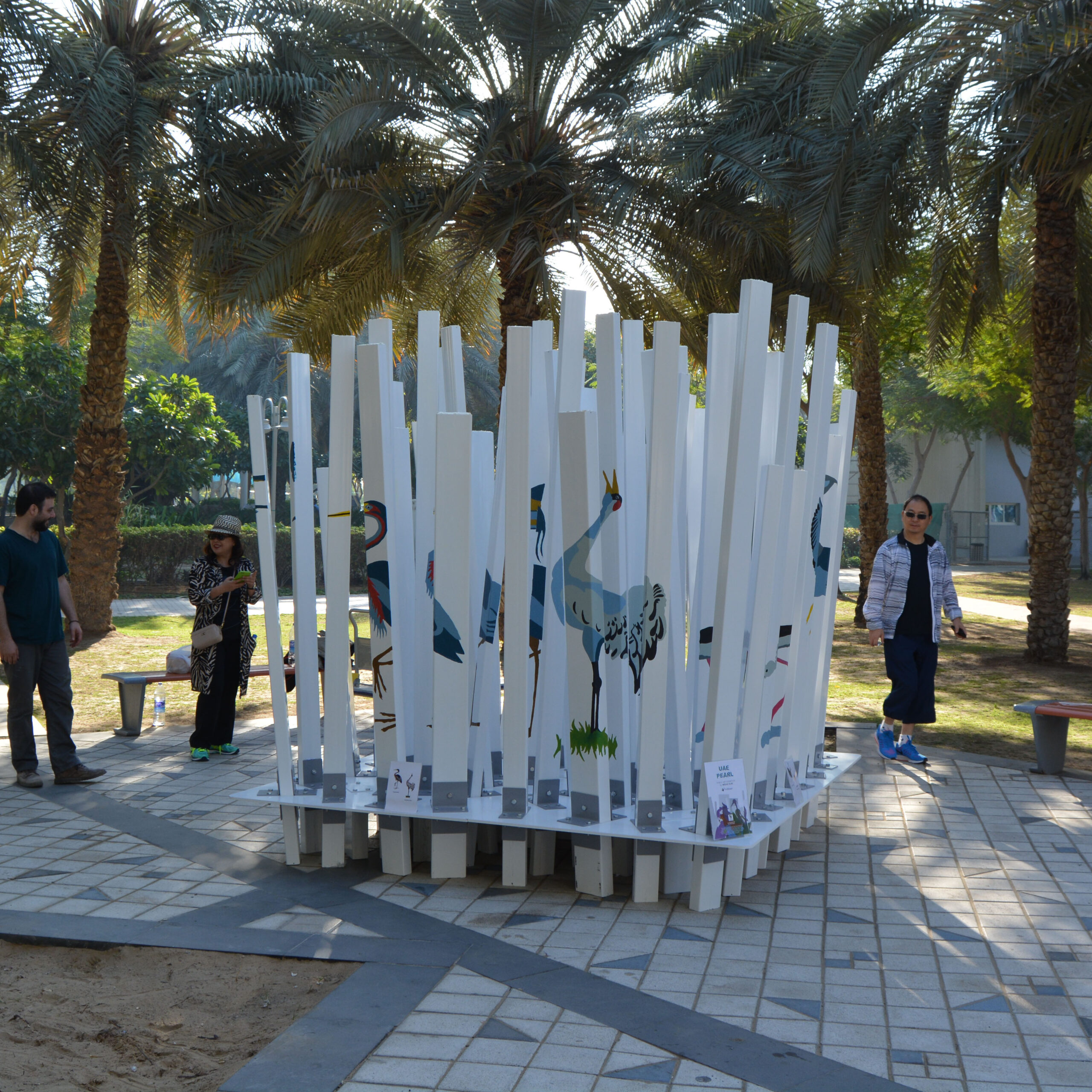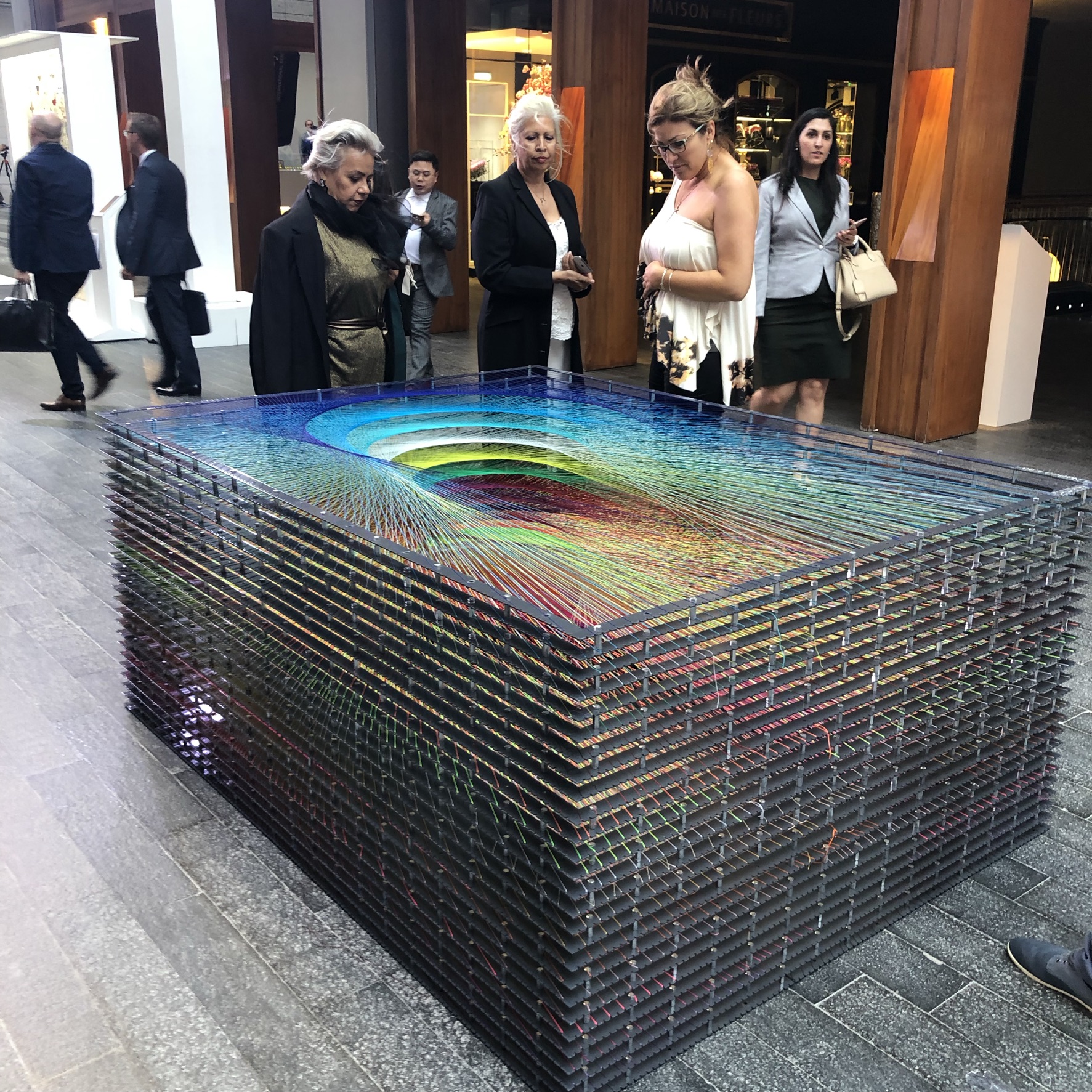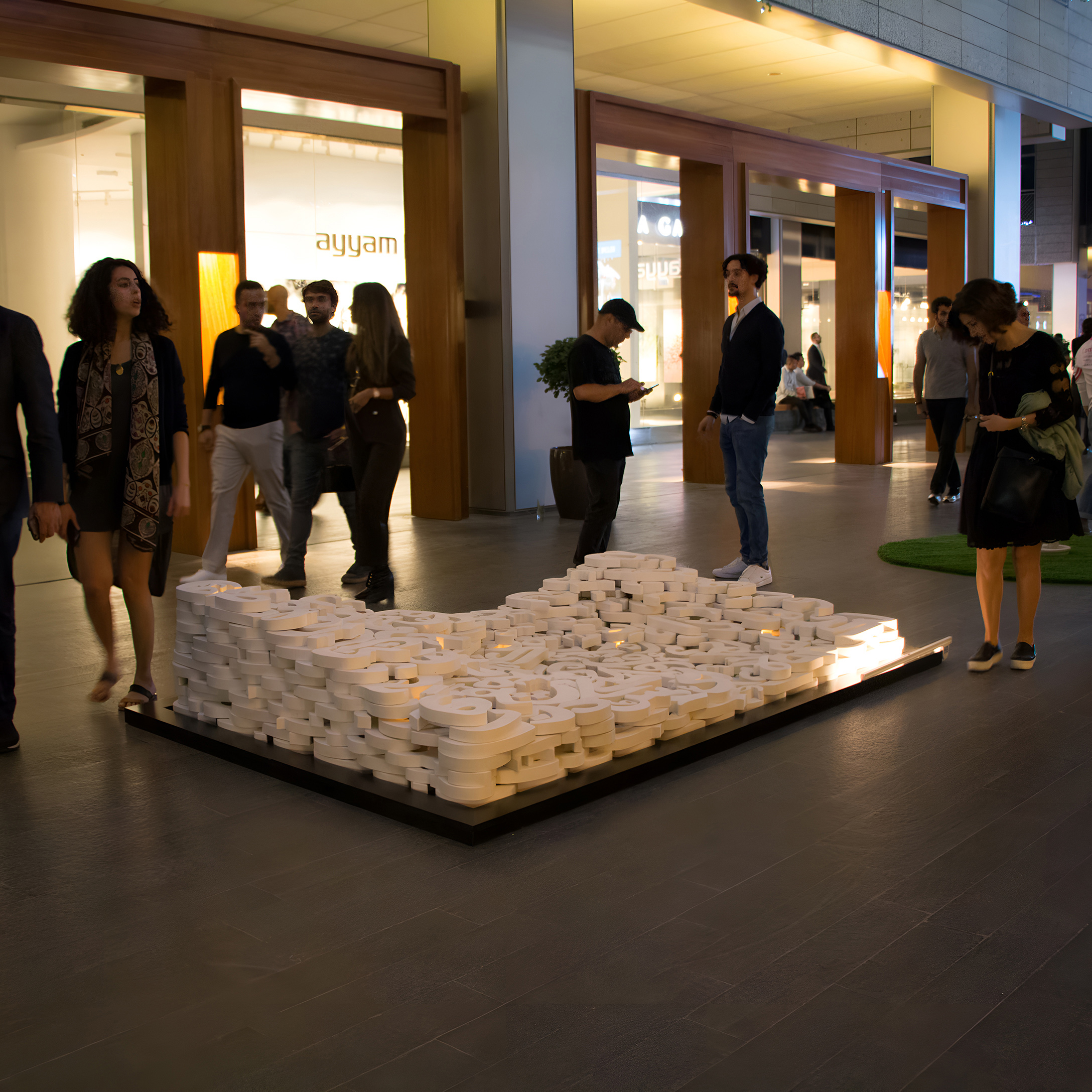Nedaa Elias
UAE Pearl, 2016
Steel 250x250 cm
The installation, called UAE Pearl, invites the audience to explore the hidden culture of the UAE to create a link between the two direct contrasts of the modern UAE; modernity and culture. It also seeks to influence the audience on how to interact with the natural scenery of UAE that hosts hundreds of beautiful birds. The user experience requires the viewer to interact with the installation by starting with one guiding point, where one bird illustration is complete and to let the viewer find other birds by changing their viewing distance, angle, focal points, and direction. The Artwork will be touring the Emirates in different public places. The first exhibition has taken place at Zabeel Park, Dubai, UAE on 8 January 2016.
Nedaa Elias
Rabbit Hole, 2019
Threads and Steel 240x160 cm
Rabbit Hole by Nedaa Elias, is an installation and social commentary of the limited perceptions, assumptions, judgements people place on one another frequently. The piece, using 500 meters of thread spanning 27 different colors and wrapped among 2m x 1.5m frames, comes together to form a contoured three-dimensional form, the Rabbit Hole. Symbolically, the Rabbit Hole’s contours in the form of circles, illustrates how we simplify and deduce our notions of individuals quickly and on a regular basis. Reinforcing these circles is the steel frames their strings depend on, representing how we place people in categorical boxes, quite quickly and unjustly in most instances. When all of the frames come together, they form a visual epiphany in understanding those around us. We slowly reform our understanding till we get to the smallest point of a rabbit hole and are left with the undeniable revelation that we are more than just the sum of some parts one has decided to pick up about us. The journey is Us, and I am not your Frame.
Nedaa Elias
Pursuit of Abjad, 2017
Plaster of Paris 220x180cm
With the spread of Islam, many languages adopted the Arabic script as a primary writing system. In order to represent phonemes that Arabic does not cover, adaptation led to the additions of hundreds of new letter designs. In the past century, many of these languages replaced the Arabic with Latin, Cyrillic or Hindi scripts. Other languages are currently following the same lead. The artist has created an installation that addresses the loss of Arabic script use. It is literally built using hand-crafted Arabic letter bricks representing the languages that still use the Arabic script. Letters of languages that abandoned Arabic script will be broken down the floor leaving gaps in the installation body. The gap is growing and this message a call to action.


